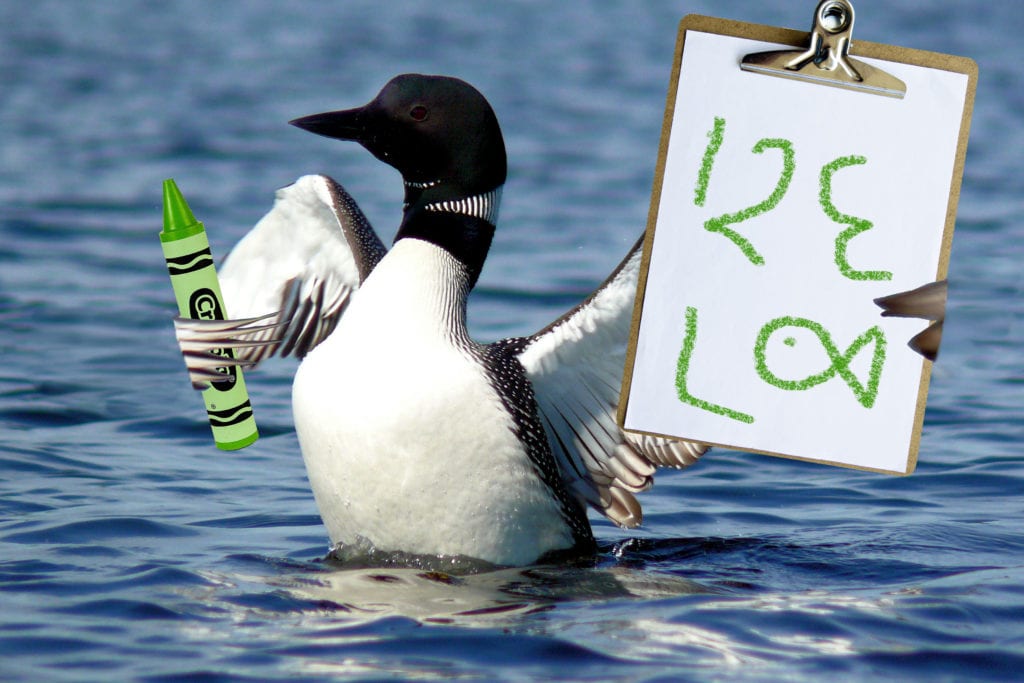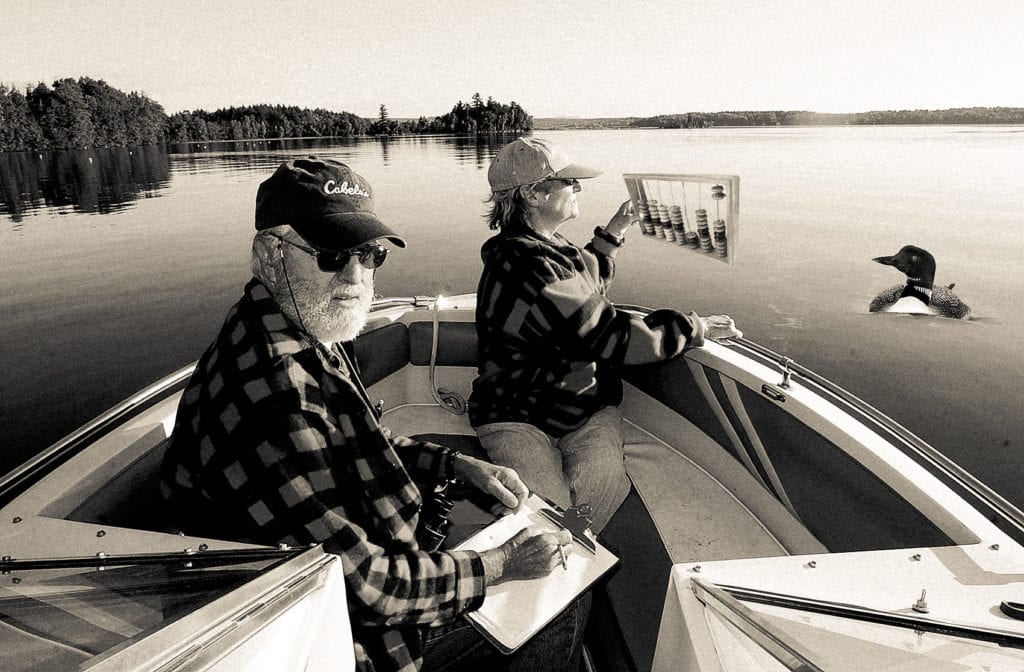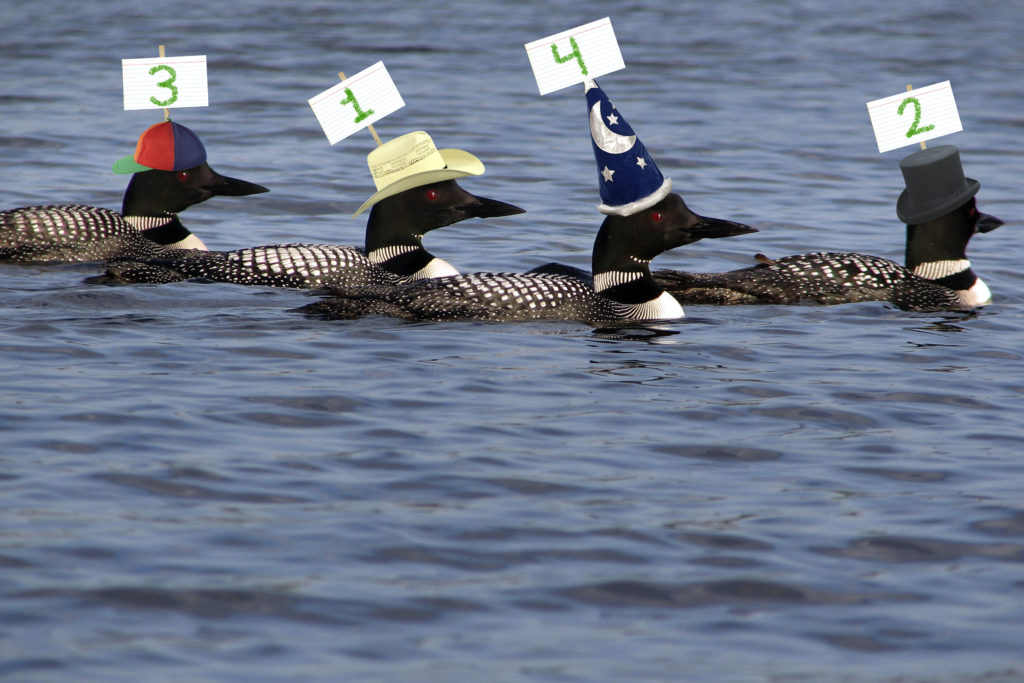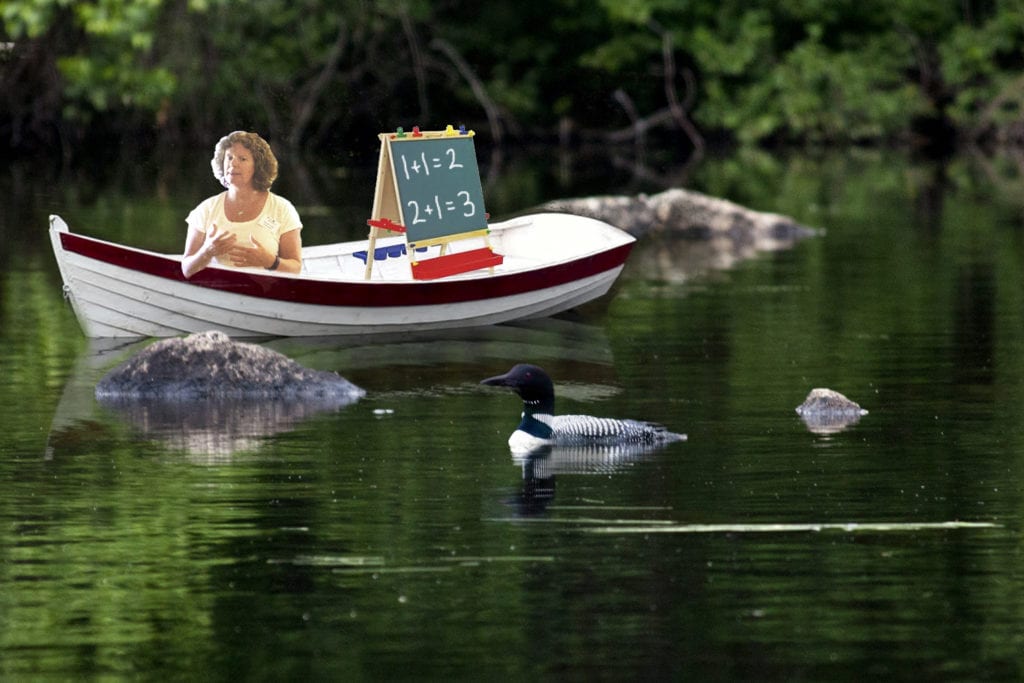
This year marks the 35th anniversary of Maine Audubon’s Annual Loon Count, and staff biologists and volunteers swear 2018 is the year they finally achieve their goal of teaching loons how to count.
Since 1984, a dedicated corps of over 1,000 citizen science volunteers has fanned out across lakes and ponds throughout Maine on the third Saturday of July with a single objective: to teach Common Loons basic math. To date, they have had limited success. But project leaders are confident they are on the verge of a breakthrough.
“This is our year, I’m sure of it,” said wildlife biologist Susan Gallo, who has been leading the Maine Loon Project and directing the count for 20 years. “The Loon Count has made incremental progress over the decades, with a few loons demonstrating some addition and subtraction abilities here and there. But we all agree that this is the year the population really takes off.”
Finding the Right Approach

Over time, the technology used to try to impart math skills to loons has evolved substantially. In the early years of the count, the primary tool used by loon counters was the abacus. Project leaders thought the simple tool would make math concepts more accessible to these iconic birds. From a cost standpoint, abacuses were also cheaper than calculators, and less of a concern if one were to fall in a lake.
The approach proved largely fruitless. Then, in the 1990s, alternative approaches began to gain popularity. A sort of “New Math” for loons, this era saw a range of experimental techniques, including working props and games into Loon Count outreach efforts. One popular method was to put loons in fun little hats with numbers on them, and then encourage them to organize themselves into sequential order.

Outcomes from the “New Math for Loons” approach were generally mixed.
Hope for the Future
Despite a lack of statistically significant results to date, project director Susan Gallo remains optimistic.
“The Loon Count is a longitudinal effort,” Gallo explained. “Studies like this require patience, persistence, and dedicated volunteers. Fortunately for us, we have all of these things.”
“Also, waterproof chalk,” she added. “Lots of waterproof chalk.”

In related news, Maine Audubon’s Brook Trout Survey recently found that only 23 percent of the fish report being “satisfied” or “very satisfied” with their local culverts.
